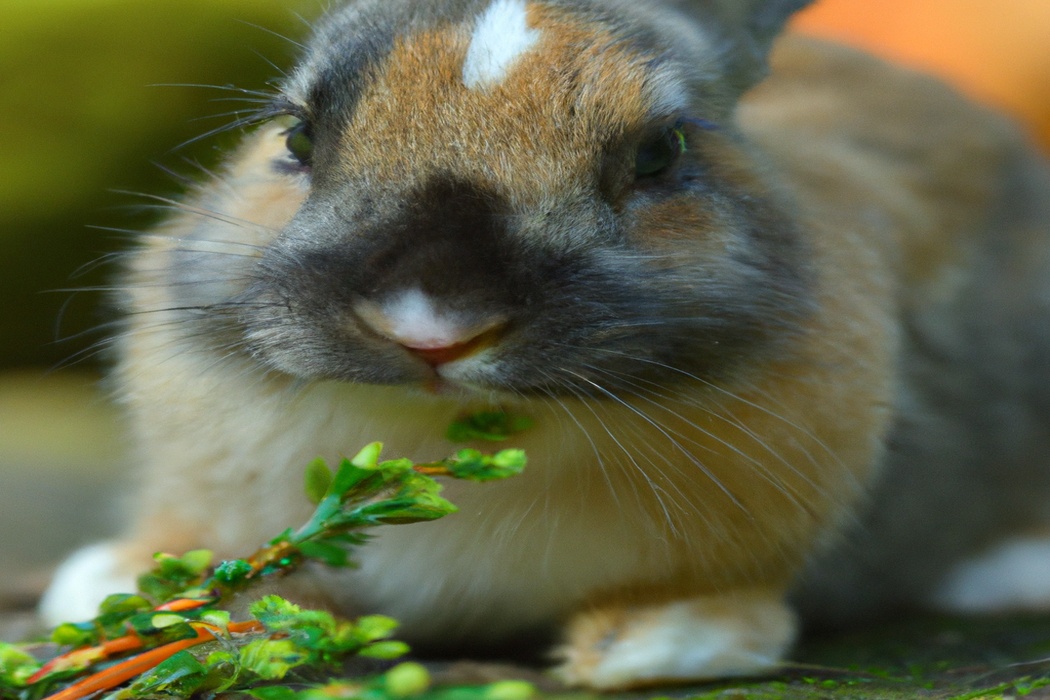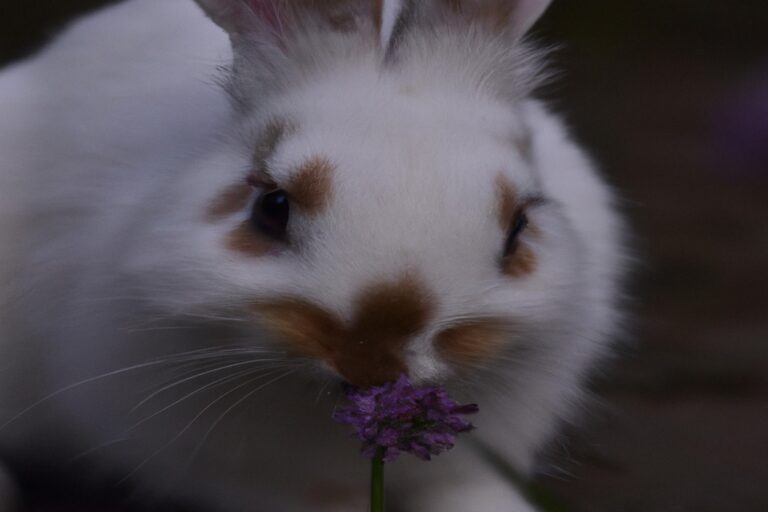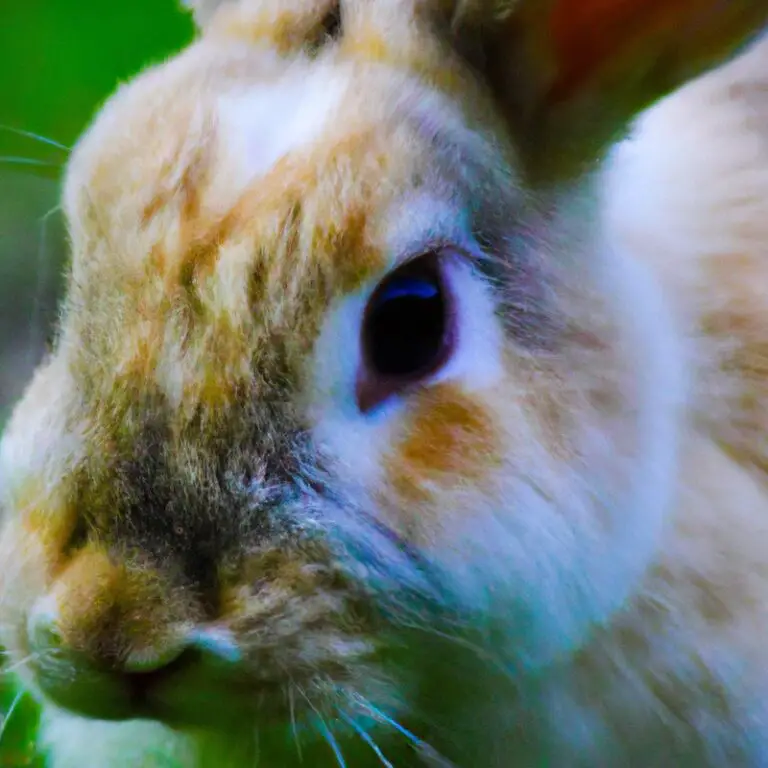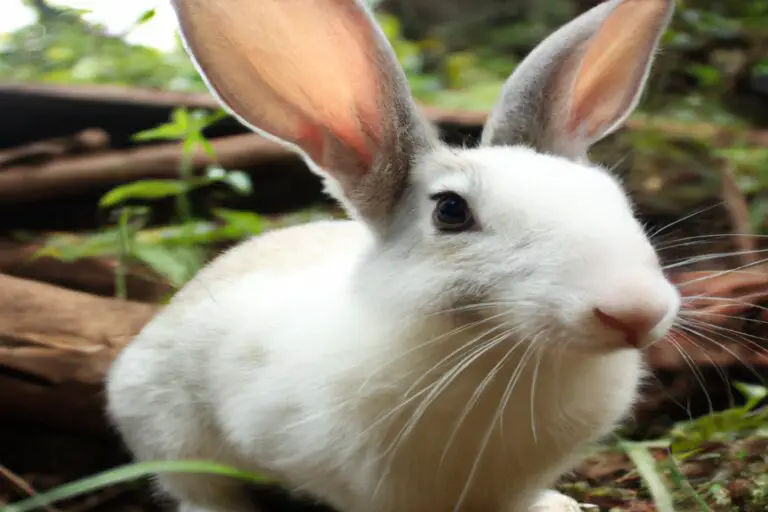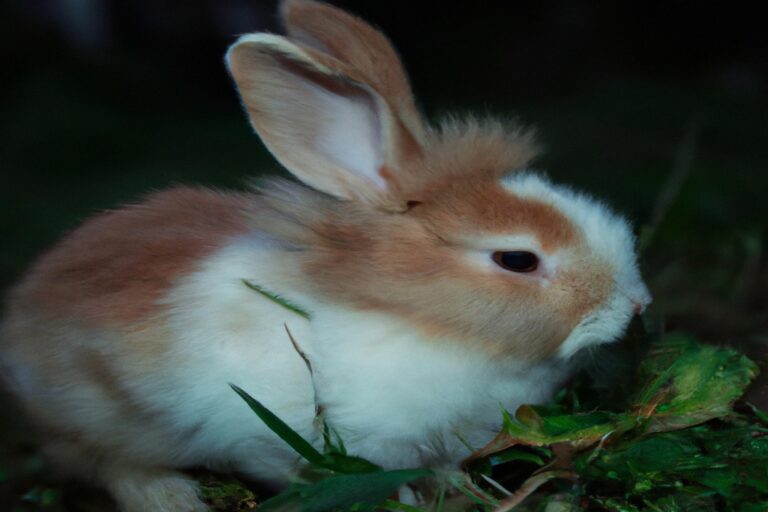How To Repair Lawn Damaged By Rabbits and restore your backyard beauty
Key Takeaways:
- Install a rabbit-proof fence to prevent further damage.
- Fill in the damaged areas with fresh soil and grass seed.
- Use natural deterrents or repellents to discourage rabbits from returning.
- Regularly maintain and care for your lawn to keep it healthy and strong.
Are you tired of witnessing your once lush and vibrant lawn being decimated by those pesky rabbits?
Well, worry no more! In this article, we’ll explore effective techniques to repair your lawn damaged by rabbits.
From identifying the telltale signs of rabbit damage to implementing preventative measures, we’ve got you covered.
We’ll also delve into the steps for repairing the affected areas, ensuring your lawn makes a speedy recovery.
So, let’s dive in and bid farewell to rabbit-induced lawn chaos once and for all!
| Methods | Description |
| 1. Fencing | Install a rabbit-proof fence around your lawn to prevent further damage. |
| 2. Repellents | Use natural or commercial rabbit repellents to deter rabbits from your lawn. |
| 3. Plant resistant vegetation | Replace damaged plants with varieties that rabbits are less likely to eat. |
| 4. Scare tactics | Place visual or audio deterrents, such as scarecrows or motion sensor noise makers, in your lawn. |
| 5. Trapping and removal | Set humane traps to catch rabbits and relocate them away from your property. |
| 6. Lawn repair | Follow proper lawn maintenance practices, including seeding, watering, and fertilizing to restore damaged parts of your lawn. |
Understanding the Damage Caused by Rabbits to Lawns
Rabbits can cause significant damage to lawns, including digging holes, eating grass, and leaving behind droppings.
Identifying Rabbit Damage on Lawns
Rabbit damage to lawns can be identified through a few key signs. Look for chewed or torn grass blades, patches of missing grass, and droppings scattered on the lawn.
Rabbits also tend to dig small holes or burrows.
Keep an eye out for tracks or pathways created by their frequent movement. Identifying these signs can help you determine if rabbits are causing damage to your lawn.
Reasons for Rabbits Damaging Lawns
Rabbits can damage lawns for several reasons.
One reason is that they love to eat grass, and lawns provide a plentiful food source.
Rabbits can also dig burrows in lawns, causing unsightly holes and uneven surfaces.
Additionally, rabbits may use lawns as a place to hide from predators, further increasing the damage.
Their constant nibbling and digging can leave lawns looking patchy and damaged.
Prevention Techniques to Protect Your Lawn from Rabbit Damage
Protect your lawn from rabbit damage with these prevention techniques.
Creating Physical Barriers to Deter Rabbits
One effective way to deter rabbits from damaging your lawn is by creating physical barriers.
Here are a few options you can consider:
- Fencing: Install a fence around your lawn using chicken wire or hardware cloth. Make sure to bury the bottom portion of the fence into the ground to prevent rabbits from digging underneath.
- Netting: Place netting over vulnerable plants or areas of your lawn to prevent rabbits from accessing them. Ensure that the netting is securely fastened so that rabbits cannot squeeze through.
- Raised beds: Consider creating raised beds for your plants to keep them out of reach from rabbits. Use materials like stone or wood to build the raised beds and ensure that they have a secure bottom to prevent rabbits from burrowing underneath.
- Repellents: Apply natural or commercial rabbit repellents around your lawn to deter rabbits. These can be in the form of sprays, granules, or pellets and often contain ingredients that rabbits find unappealing.
Remember to regularly check and maintain your barriers to ensure their effectiveness.
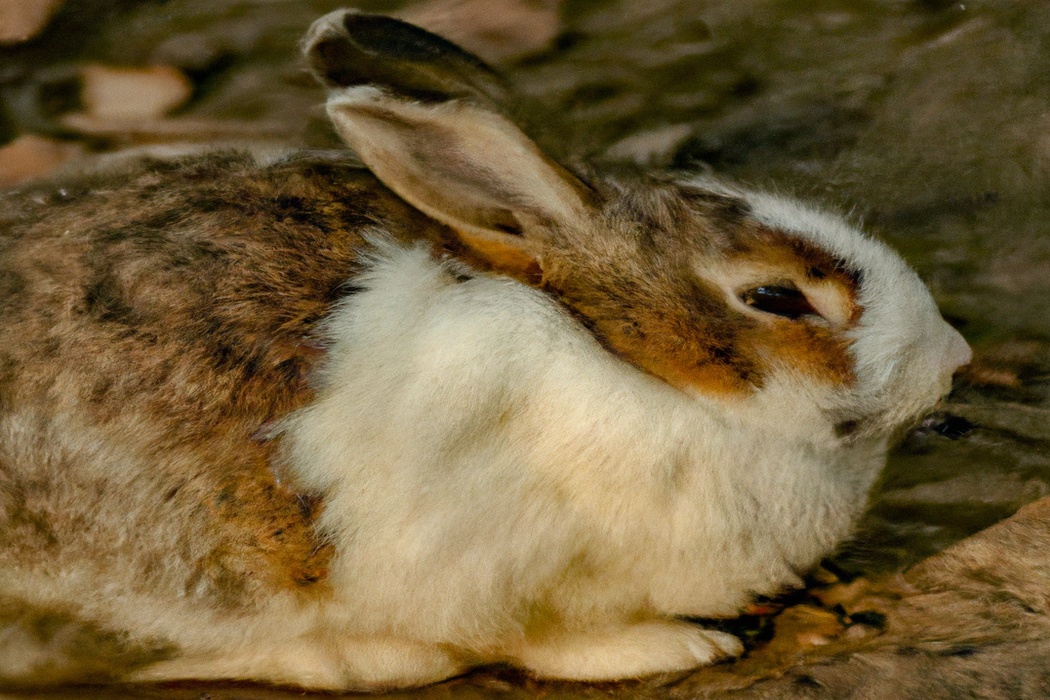
Implementing Rabbit-Resistant Plants in the Lawn
To protect your lawn from rabbit damage, a great approach is to incorporate rabbit-resistant plants.
These are plants that rabbits tend to avoid because they either don’t find them appetizing or they have a strong scent that repels them.
Some examples of rabbit-resistant plants include lavender, rosemary, marigolds, and daffodils.
By planting these in your lawn, you can create a natural barrier that deters rabbits from feasting on your plants.
Additionally, consider using fencing or mesh to further protect your lawn from these furry invaders.
Using Repellents and Deterrents
To protect your lawn from rabbit damage, you can use repellents and deterrents.
Here are some effective options:
- Scare devices: Place motion-activated devices like sprinklers or noise makers to startle rabbits and discourage them from entering your lawn.
- Fencing: Install a sturdy fence around your lawn to physically prevent rabbits from accessing it.
- Repellent sprays: Apply commercially available repellent sprays on your plants and lawn. These sprays contain ingredients that rabbits find unpleasant, effectively deterring them.
- Natural repellents: Consider using natural repellents like garlic or predator urine, as rabbits dislike these odors.
Remember to reapply repellents after rainfall and regularly rotate deterrent methods to increase their effectiveness.

Steps to Repair Rabbit-Damaged Lawns
Clearing and Cleaning the Damaged Area, Reseeding or Sodding the Affected Patches, Proper Irrigation and Maintenance for Optimal Recovery.
Clearing and Cleaning the Damaged Area
To clear and clean the damaged area caused by rabbits, start by removing any debris, such as branches or rocks, that may be scattered across the lawn. Use a rake or broom to gather and dispose of the debris properly.
Next, inspect the area for any remaining rabbit droppings and remove them.
Rake the damaged area to loosen the soil and remove any dead grass or weeds. If necessary, reseed or lay down fresh sod to fill in the bare patches.
Water the area thoroughly after cleanup to help promote new grass growth.

Reseeding or Sodding the Affected Patches
To repair lawn patches damaged by rabbits, you have two options: reseeding or sodding. Reseeding involves spreading grass seeds over the affected areas and ensuring they are watered regularly.
Sodding, on the other hand, involves laying down squares of pre-grown grass.
Both methods require preparing the soil by removing debris and loosening it up. Reseeding is more cost-effective but takes longer to see results, while sodding provides instant coverage but can be more expensive.
Choose the method that suits your budget and time constraints.
Proper Irrigation and Maintenance for Optimal Recovery
Proper irrigation and maintenance are key to facilitating optimal recovery of a lawn damaged by rabbits.
Here’s what you can do:
- Watering: Ensure consistent moisture levels by watering your lawn deeply and infrequently. This encourages deep root growth and resilience.
- Mowing: Maintain a higher mowing height to allow grass to recover and reduce stress on the plants. Avoid cutting more than one-third of the grass height at a time.
- Fertilizing: Apply a balanced fertilizer to provide essential nutrients for recovery. Follow recommended application rates to avoid over-fertilization.
- Seeding: Overseed any bare patches to encourage new growth and fill in damaged areas. Choose grass species that are suitable for your region and soil conditions.
- Pest Control: Implement rabbit deterrents, such as fencing or repellents, to prevent further damage. Consult with local experts for safe and effective methods.
Remember, regular monitoring and adjustments to your irrigation and maintenance practices will help your lawn recover and thrive after rabbit damage.
Frequently Asked Questions about Repairing Rabbit-Damaged Lawns
Can I prevent rabbit damage to my lawn completely?
Preventing rabbit damage to your lawn completely is difficult, but there are steps you can take to minimize it. Installing a fence around your yard can help keep rabbits out, but they may still find ways to dig under it.
Another option is using repellents like garlic or predator urine.
Additionally, keeping your lawn well-maintained by regularly mowing and removing debris can make it less enticing to rabbits. It’s important to remember that while these measures can be effective, it’s unlikely you can completely prevent rabbit damage to your lawn.
How long does it take for a lawn to recover from rabbit damage?
The recovery time for a lawn damaged by rabbits can vary depending on the extent of the damage. In general, it can take anywhere from a few weeks to several months for the lawn to fully recover.
During this time, it’s important to address the damage by filling in bare spots, reseeding or sodding as needed, and providing proper care and maintenance.
Regular watering, fertilizing, and mowing will help expedite the recovery process. It’s also crucial to deter rabbits from reentering the area to prevent further damage.
What other wildlife may cause damage similar to rabbits?
Squirrels, voles, and deer are other wildlife that can cause damage to lawns similar to rabbits.
Squirrels may dig holes to bury or retrieve food, while voles can create shallow tunnels and eat grass roots.
Deer, on the other hand, can leave behind large areas of damage as they graze on grass.
If you suspect other wildlife besides rabbits is causing damage to your lawn, it’s important to identify the culprit and take appropriate measures to prevent further damage.
Tips for Long-Term Rabbit Control and Lawn Health
Consulting with professionals and following regular lawn care practices can help control rabbits and ensure a healthy lawn in the long term.
Consulting with Professionals for Effective Rabbit Control
If you’re dealing with a persistent rabbit problem, consulting with professionals can be a great option for effective rabbit control.
These experts have the knowledge and experience to assess the situation and provide targeted solutions.
They can help you identify the best methods for rabbit prevention and removal, taking into account the specific needs of your lawn and landscape.
Working with professionals ensures that you’re addressing the problem in the most efficient and humane way possible.
Regular Lawn Care Practices to Ensure a Thriving Lawn
To ensure a thriving lawn, regular lawn care practices are essential.
Here are some tips to help you maintain a healthy and lush lawn:
- Watering: Water your lawn deeply and infrequently, preferably in the early morning or late evening to minimize evaporation. Aim for about 1-1.5 inches of water each week.
- Mowing: Set your mower blades to the correct height for your specific grass type. Regularly mow your lawn to maintain the appropriate height, usually around 2-3 inches.
- Fertilizing: Apply a balanced fertilizer according to the needs of your grass, usually in the spring and fall. Follow the recommended application rates for best results.
- Weed control: Regularly inspect your lawn for weeds and address them promptly. Hand-pulling or using herbicides can be effective strategies for weed control.
- Aerating: Aerating your lawn once or twice a year will improve soil compaction and promote better nutrient absorption.
- Overseeding: If you notice thin or bare spots in your lawn, overseeding can help fill in those areas and promote healthier growth overall.
- Soil testing: Regularly test your soil to determine its pH level and nutrient content. Based on the results, you can make appropriate adjustments to your lawn care practices.
Monitoring and Taking Quick Action to Prevent Future Damage
To prevent future damage from rabbits, it’s important to monitor your lawn regularly.
Keep an eye out for signs of rabbit activity, such as chewed plants and droppings.
If you spot any damage, take quick action to deter rabbits.
Install fences, use repellents, and remove any potential food sources.
Additionally, creating distractions like placing bird feeders can help redirect rabbits away from your lawn.
Regular monitoring and taking immediate action are key to preventing further damage.
Final Verdict
Repairing a lawn damaged by rabbits requires a combination of prevention, repair techniques, and long-term control measures. Identifying rabbit damage on lawns and understanding the reasons behind it is crucial for effective prevention.
Implementing physical barriers, rabbit-resistant plants, and repellents can help deter rabbits from causing further damage.
Repairing the damaged areas involves clearing, reseeding or sodding, and proper irrigation and maintenance. It is important to consult with professionals for effective rabbit control and to regularly monitor and take quick action to prevent future damage.
By following these steps, you can restore your lawn and maintain its health and beauty for the long term.

